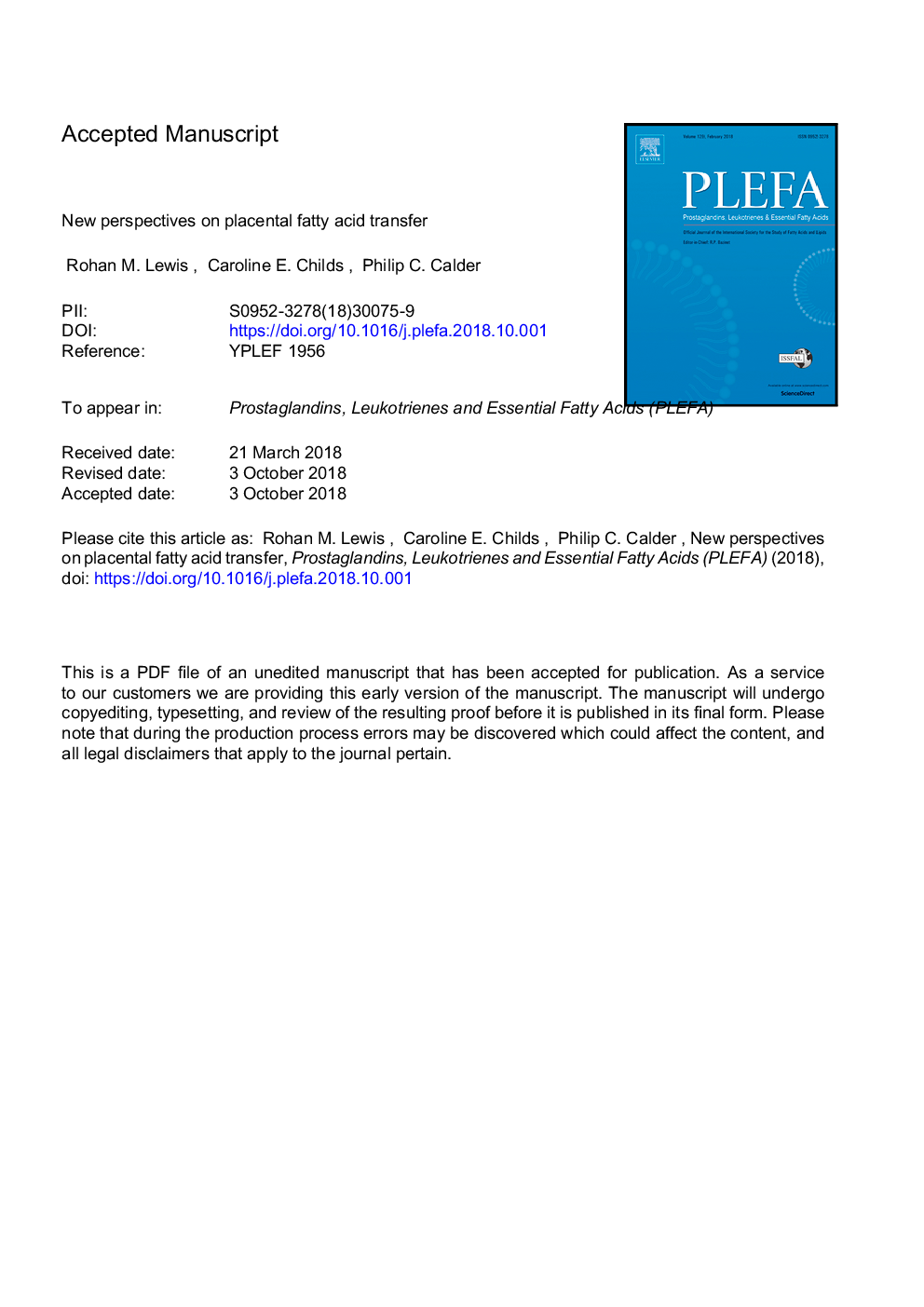| کد مقاله | کد نشریه | سال انتشار | مقاله انگلیسی | نسخه تمام متن |
|---|---|---|---|---|
| 11019139 | 1718185 | 2018 | 24 صفحه PDF | دانلود رایگان |
عنوان انگلیسی مقاله ISI
New perspectives on placental fatty acid transfer
ترجمه فارسی عنوان
دیدگاه های جدید در انتقال اسید های چرب جیوه
دانلود مقاله + سفارش ترجمه
دانلود مقاله ISI انگلیسی
رایگان برای ایرانیان
کلمات کلیدی
متابولیسم، امگا 3، آناتومی،
موضوعات مرتبط
علوم زیستی و بیوفناوری
بیوشیمی، ژنتیک و زیست شناسی مولکولی
بیوشیمی بالینی
چکیده انگلیسی
The human foetus depends on placental transfer for the fatty acids required for its growth and development. Long chain polyunsaturated fatty acids (LC-PUFAs) may specifically influence neurodevelopment. Therefore, it is important to understand the mechanisms of placental transfer of LC-PUFAs. The simple view of placental fatty acid transfer is that it occurs by diffusion down the maternal to foetal gradient, facilitated by membrane transporters. This view has been complicated by studies highlighting the role of placental metabolism in fatty acid transfer. Most fatty acids taken up by the placenta will be esterified and incorporated into lipid rather than diffusing directly across to the foetus. Furthermore, this esterification is likely to mean that placental intracellular “free” fatty acid concentrations are lower than in foetal plasma which would not be conducive to simple diffusion of fatty acids to the foetus. Placental structure poses additional questions, in particular how fatty acids cross the hydrophilic villous stroma separating the trophoblast from the endothelium and how they cross the endothelium itself. The understanding of placental fatty acid transfer needs to evolve to address these questions. The role of the placenta is not simply to mediate solute transfer; it is also a central endocrine organ of pregnancy. Placental-derived lipid mediators, such as prostaglandins, have well-established roles in parturition and, almost certainly, throughout gestation. Metabolic targeting of specific fatty acids to different lipid pools in the placenta may determine their availability as both nutrients and signalling molecules. Placental transfer will determine fatty acid availability within the foetus as well as influencing maternal levels. Fatty acids and their derivatives may also act as signals to the placenta indicating metabolic states in both mother and foetus. Placental uptake and metabolism of LC-PUFAs are important to meet both foetal and placental demands. This paper will review placental fatty acid transfer and metabolism and highlight issues which need to be addressed.
ناشر
Database: Elsevier - ScienceDirect (ساینس دایرکت)
Journal: Prostaglandins, Leukotrienes and Essential Fatty Acids - Volume 138, November 2018, Pages 24-29
Journal: Prostaglandins, Leukotrienes and Essential Fatty Acids - Volume 138, November 2018, Pages 24-29
نویسندگان
Rohan M. Lewis, Caroline E. Childs, Philip C. Calder,
